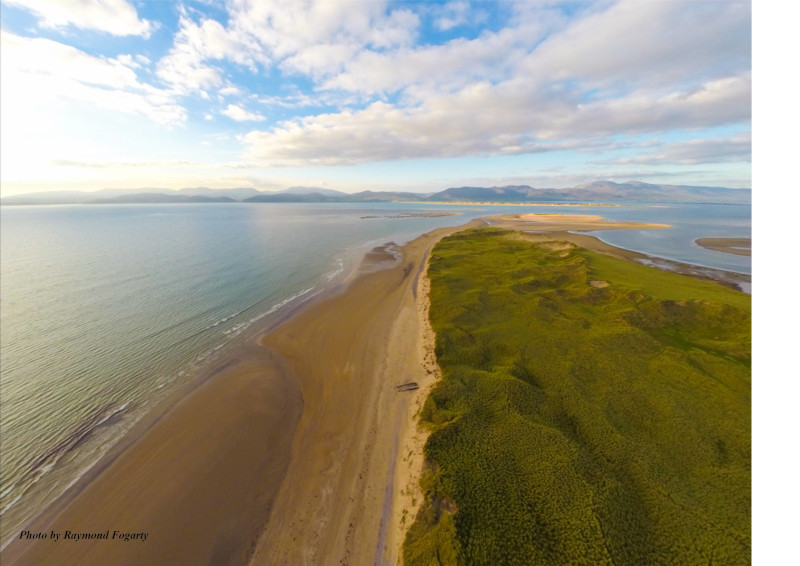Where land and sea collide. Where untamed beauty abounds. Welcome to unforgettable experiences. Welcome to Kerry's Wild Atlantic Way.
SIGNATURE DISCOVERY POINT
Bray Head
Bray Head is a signature discovery point along Kerry's Wild Atlantic Way, located on the western end of Valentia Island. at its summit is Bray Tower, an abandoned signal tower built in 1815. From Bray head there are great views over the Skellig Islands, the Skellig coast and sheer cliffs, Portmagee and Puffin Island. Skellig Michael and Small Skellig are two islands rising from the Atlantic some 13km southwest of Valentia Island, and are a UNESCO World Heritage Site. Close to Bray Head you will also find the historic site where the first trans-atlantic cable landed in 1866 which connected North America to the rest of the world.
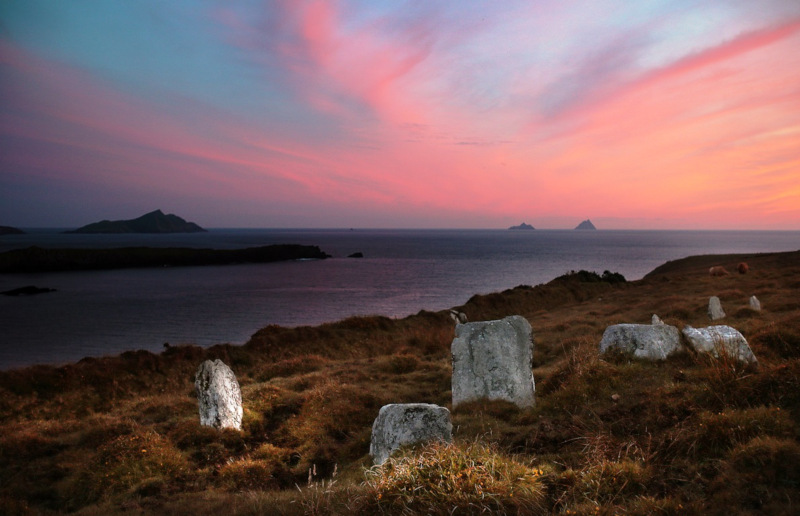
DISCOVERY POINTS
Kerry Cliffs
The Kerry Cliffs near Portmagee offer spectacular views of the Skellig Islands and Puffin Island from over 300 meters high. The cliffs were formed over 400 million years ago. Once there stood two stone forts high above the wave lashed cliffs, today all that survives is a stone wall a few feet high with sheer 60ft cliffs behind them and acres of wild wind blow bog land in front.
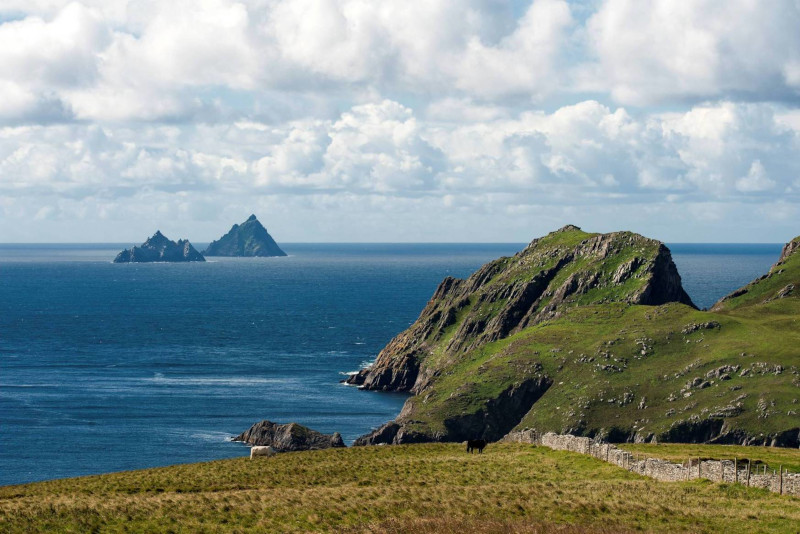
Coomanaspic Pass
The views from Coomanaspic Pass, from incredible height, are amazing. You can see both sides of the peninsula, marked with dramatic cliffs that drop straight to the sea. On one side you'll see Portmagee, main departure point for a boat trip to the Skellig Islands, and also Valentia Island, that is joined to the mainland by bridge. On the other side you'll have a good view of the Skelilg Islands in the Atlantic Ocean, and Ballinskelligs where Irish is the everyday language and villagers keep alive the Irish cultural traditions.
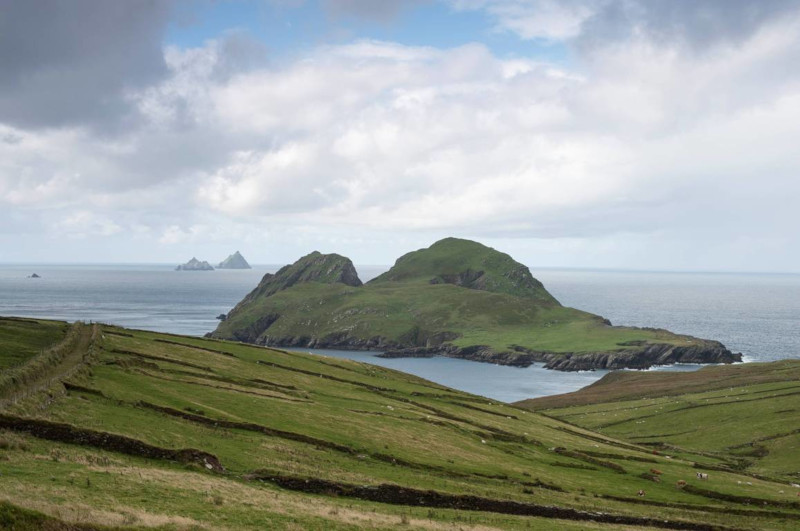
Skellig Michael
Skellig Michael rises from the Atlantic Ocean some 13km off Valentia Island. The island compromises a well preserved monastery and remote hermitage, and is the most spectacularly situated of all the early medieval Irish monastic sites. It is now designated as a UNESCO World Heritage Site. The monastic site on Skellig Michael is reached by climbing more than 600 steps on a 1,000-year-old stairway. Stone beehive huts where the monks lived and prayed cling to cliff edges alongside oratories, a cemetery, stone crosses, holy wells and the Church of St Michael. The island is also an internationally site for breeding seabirds with its steep rock slopes and cliffs providing nesting places for a variety of seabirds. The nearby Small Skellig is home to over 27,000 pairs of gannets, making it the world's second-largest colony of these sea birds. You can experience the Skellig Islands first-hand with a boat trip, or opt to stay on dry land and visit the Skellig Experience Centre instead.
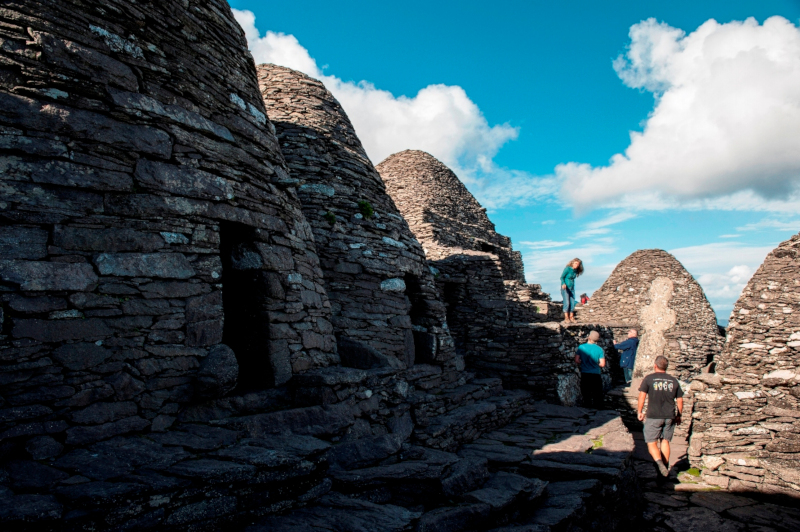
Derrynane House
Derrynane House is the ancestral home of one of Ireland's most famous historical figures, Daniel O'Connell, lawyer, politician and statesman. Situated on 120 hectares of parklands on the scenic Kerry coast, the house is filled with period furnishings and a collection of his personal possessions. The surrounding plantations and garden walks were laid out in the 18th and 19th centuries. The house and grounds have been preserved and are open to the public every day during the summer months. From the House it is only a short walk to the beautiful Derrynane Beach.
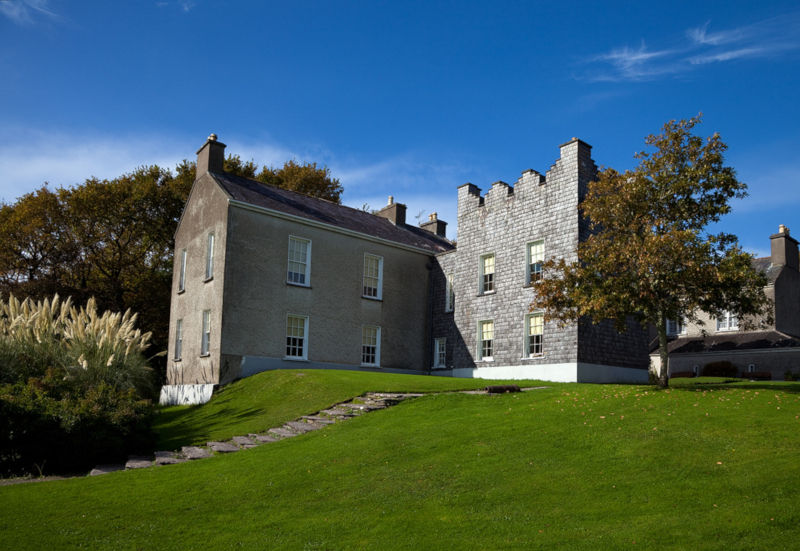
Coomakista
The Coomakista Pass (215m) between Caherdaniel and Waterville ofefrs panoramic views over the Kenmare Bay, Abbey Island, Deenish Island and Scariff Island. There are also nice views of Waterville village in the distance, and an ancient Iron Age stone fort.
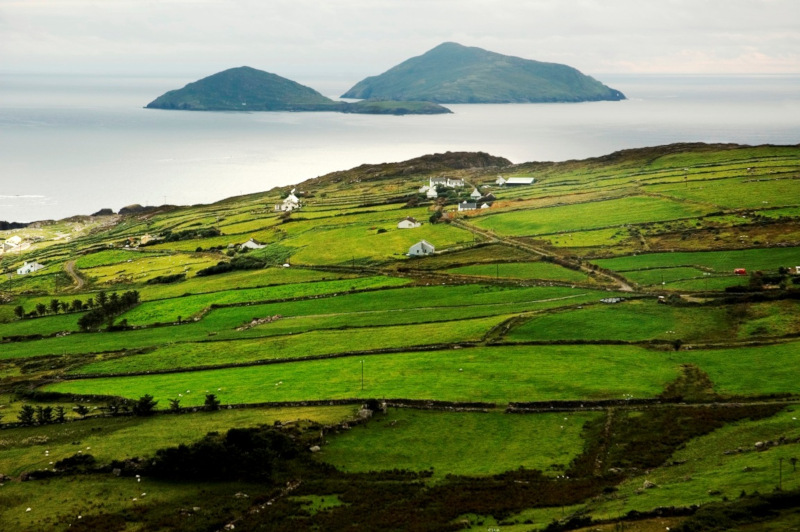
Ballinskelligs
Ba Na Scealg or Ballinskelligs is one of the few remaining Irish speaking areas in Kerry. The village can trace its origins back to the monks in the 5th or 6th century who made their home on the nearby Skellig Michael. You can still find the old character and charm of the area by exploring the surrounding countryside. The nearby Ballinskelligs Beach has European designated Blue Flag Status.
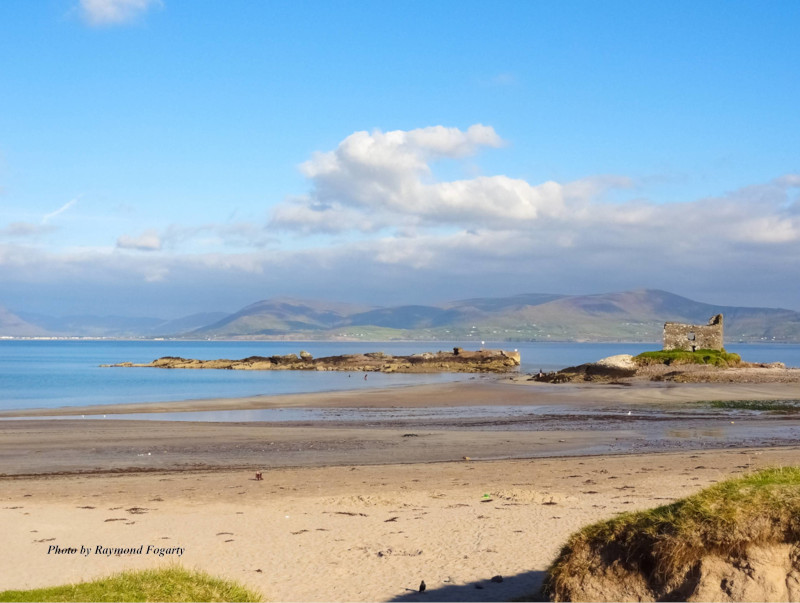
Geokaun Mountain
Geokaun Mountain is the highest point on Valentia Island. Walk or drive to the top of the mountain on one of the most westerly parts of Europe. See the fantastic cliffs and enjoy the great panoramas, and learn about the social and cultural history of the area.
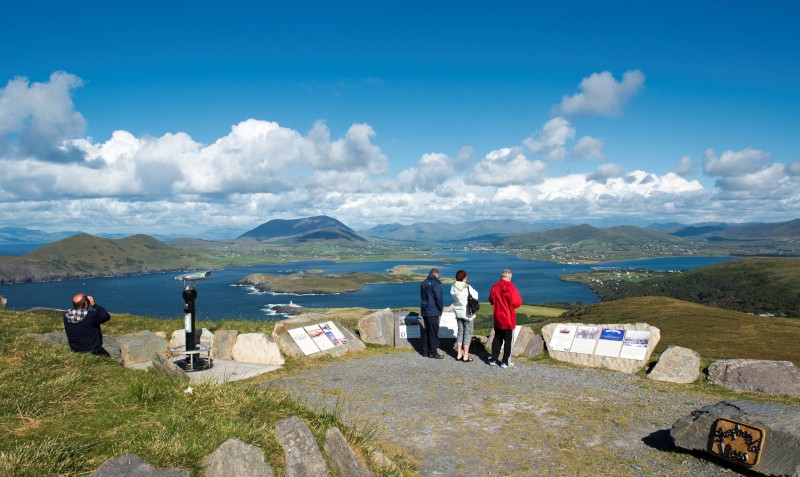
Mountain Stage - Glenbeigh
From Mountain Stage you can enjoy fabulous views over Dingle Bay, the Dingle Peninsula, Rossbeigh Beach and Inch Beach. On the mountains you will find the remains of the old Great Southern and Western Rail line which travelled this way in the 1900's.
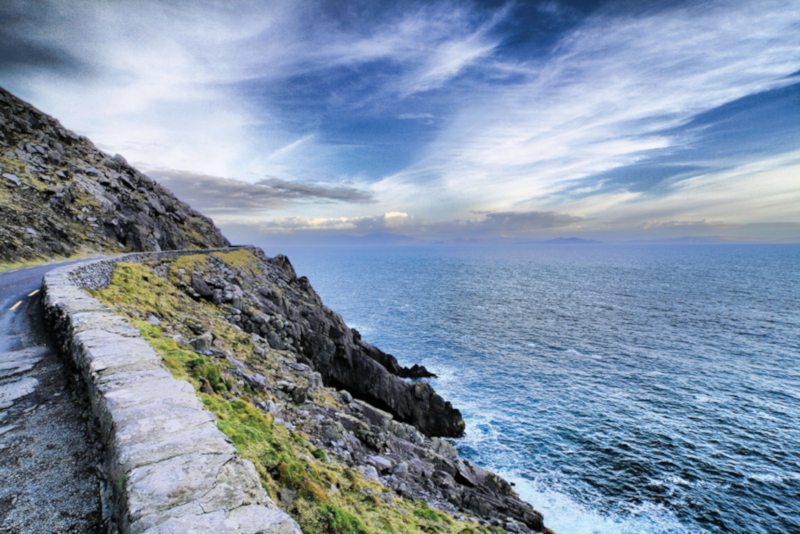
Rossbeigh Beach
This beautiful beach is extending for over 11km and is a wonderful location for swimming, water sports, walking and horse riding. It is located near the village of Glenbeigh.
